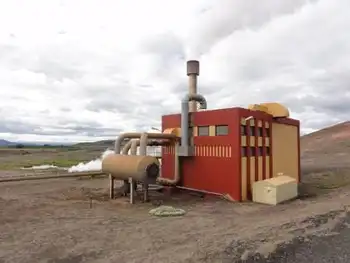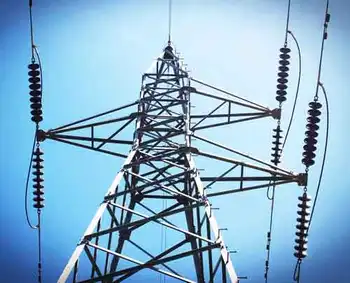Turkey-manure power plant raises stink with environmentalists
By International Herald Tribune
Substation Relay Protection Training
Our customized live online or in‑person group training can be delivered to your staff at your location.

- Live Online
- 12 hours Instructor-led
- Group Training Available
Thanks to the abundance of local droppings, Benson is home to a new $200 million power plant that burns turkey waste to produce electricity. For the last few weeks, fuel has poured in from nearby farms by the truckload, filling a hall several stories high.
The power plant is a novelty on the prairie, the first in the country to burn animal waste - manure mixed with farm-animal bedding like wood chips - and sits at the intersection of two national obsessions: an appetite for lean meat and a demand for alternative fuels.
But it has also put Benson, a town of 3,376 some three hours west of Minneapolis, on the map in another way: as a target of environmental advocates who question the earth-friendliness of the operation.
The critics say turkey litter, of all farm animals' manure, is the most valuable as a rich, organic fertilizer at a time when demand is growing for all things organic. There is even a Web site devoted to the alleged environmental failings at the power plant, which detractors consider just another pollutant-spewing incinerator dressed up in green clothing.
Related issues are that the electricity is expensive, a condition of a contract signed before construction, and that it requires a lot of material to produce a rather small output.
Marty Coyne of Platts Emissions Daily, a newsletter that analyzes issues related to the energy markets, said it would take 10 waste-burning plants the size of the one here to equal the energy generated by one midsize coal-fired plant.
"As a matter of public policy, it stinks," said David Morris, vice president of the Institute for Local Self-Reliance, an advocacy group with offices in Minneapolis and Washington. "The problem is that it's using a resource in an inefficient way and required huge subsidies to create a more inferior product than what was already being sold on the market."
Minnesota produces more turkeys than any other state, about 44.5 million birds in 2005, the most recent year for which data are available. The Benson plant has been of considerable help for farmers with a waste-disposal problem.
The plant was built by Fibrowatt, a Philadelphia-based company, with financial incentives from Minnesota. It is largely a test case, watched carefully because Fibrowatt plans to expand its operation to other poultry-raising states.
Executives at the company did not expect a perfectly smooth start when operations began in mid-May, but they are surprised by the debate the plant has generated.
"We are completely puzzled by why people would make such a major effort to denigrate what we're doing," said Rupert Fraser, chief executive.
According to one its air permits, the plant is a major source of particulate matter, sulfur dioxide, carbon monoxide, nitrogen oxides and hydrogen sulfide.
It was granted permission to operate because of the way the emissions are controlled and cleaned before being released into the air.
"All projected impacts were well below Minnesota's health risk values," the permit says, but officials were to continue monitoring output.
"We shouldn't just assume that because something is called an energy source, it's a good one," said J. Drake Hamilton, science policy director at Fresh Energy, an advocacy group in St. Paul, Minnesota.
"You have to evaluate, where did this waste product come from?" he said. "You want to be careful about what you're putting into the air and water."
Pet owners who see new possibilities for their household litter boxes should know that it takes about 500,000 tons of turkey waste to produce enough electricity for a few rural counties for a year. And, not all litter burns well. Unlike cow or hog manure, which is wet, turkey manure is mostly dry. That aids combustion. So does the fact that it is mixed with turkey-bedding materials like sunflower hulls, wood chips and alfalfa stems.
At the Benson plant, a boiler produces high-pressure steam that drives a 55-megawatt generator. A negative air pressure system controls odors from becoming a nuisance outside the plant.
Part of what drew Fibrowatt to Minnesota, Fraser said, was a legislative mandate in the early 1990s that the primary utility in the area, Xcel Energy, construct a wind or biomass generating plant, or contract for electricity from one, as a way of expanding Minnesota's energy sources.
To meet the requirement, the company entered into a 21-year agreement with Fibrowatt, said Karen Hyde, managing director for resource planning and acquisition at Xcel.











